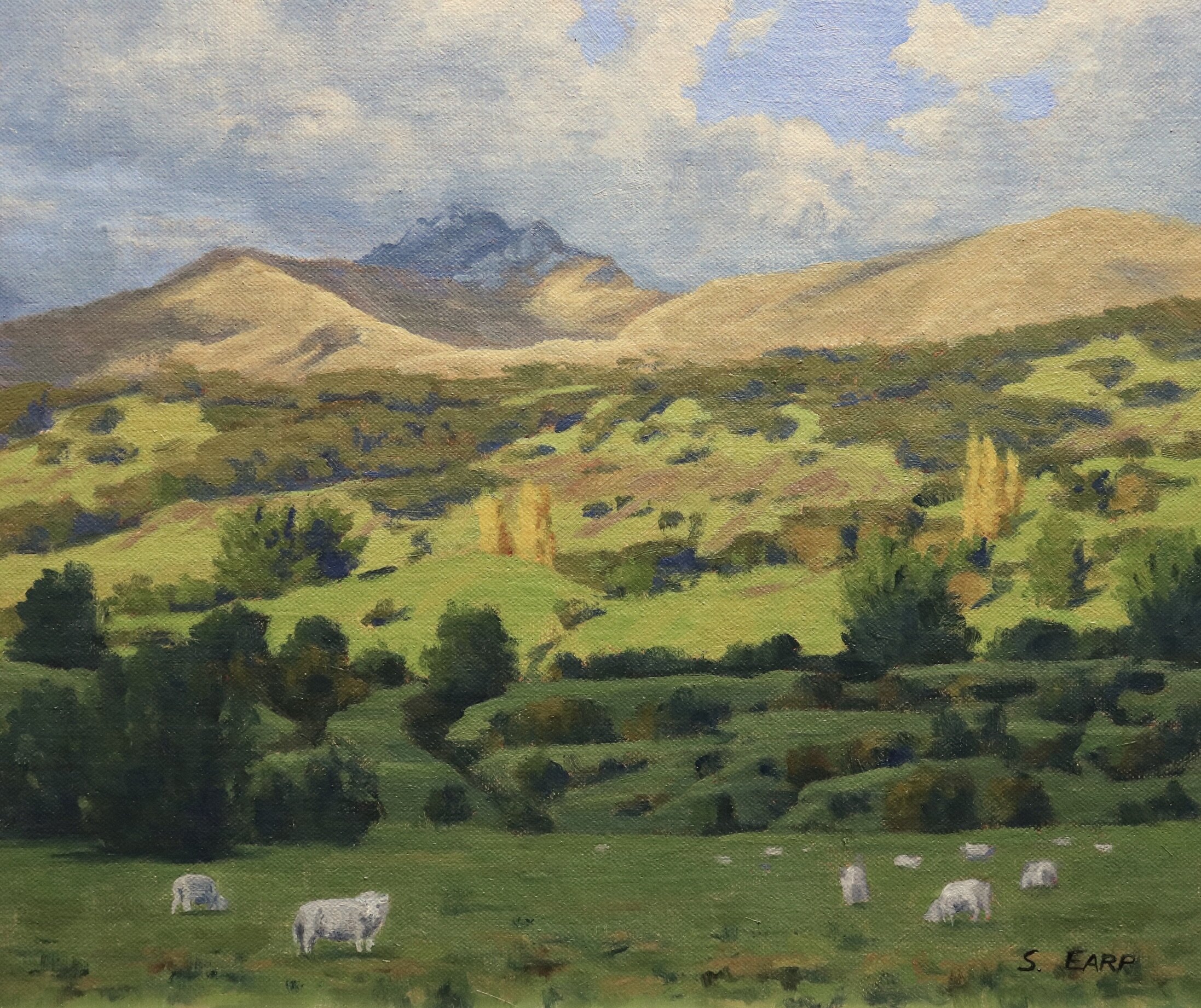
In this blog post I will show you how to paint this landscape inspired by the mountains around the village of Glenorchy in southern New Zealand.
In this painting I will show you how we can use tonal values to create light and shadow. This painting features a contrast between the background hills and mountain that are bathed in the soft evening light, juxtaposed against the foreground which is in shadow.
Reference Photos
Here are some of the reference photos I used to create this painting. Please feel free to use them or copy them if you would like to have a go at painting this art work.
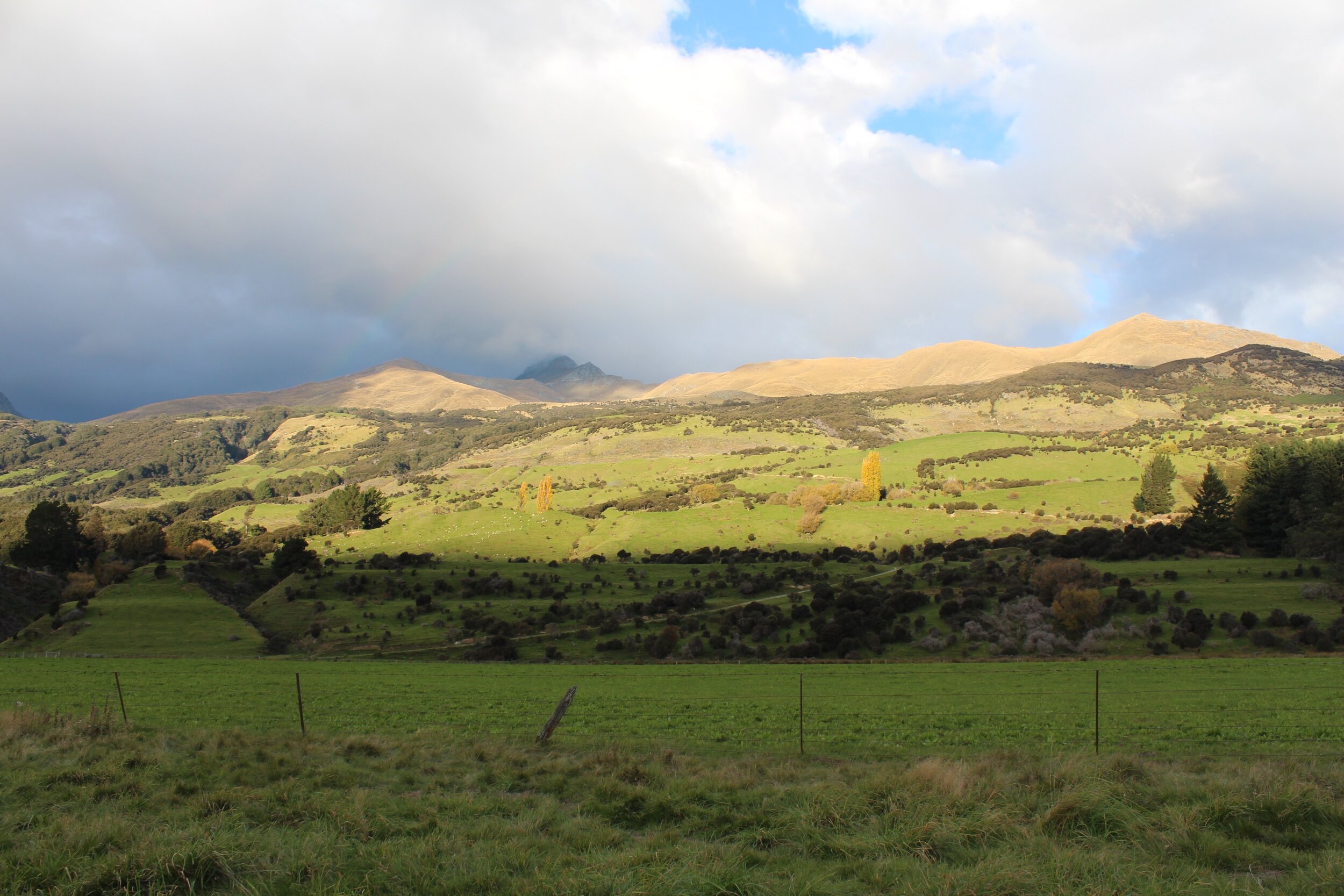
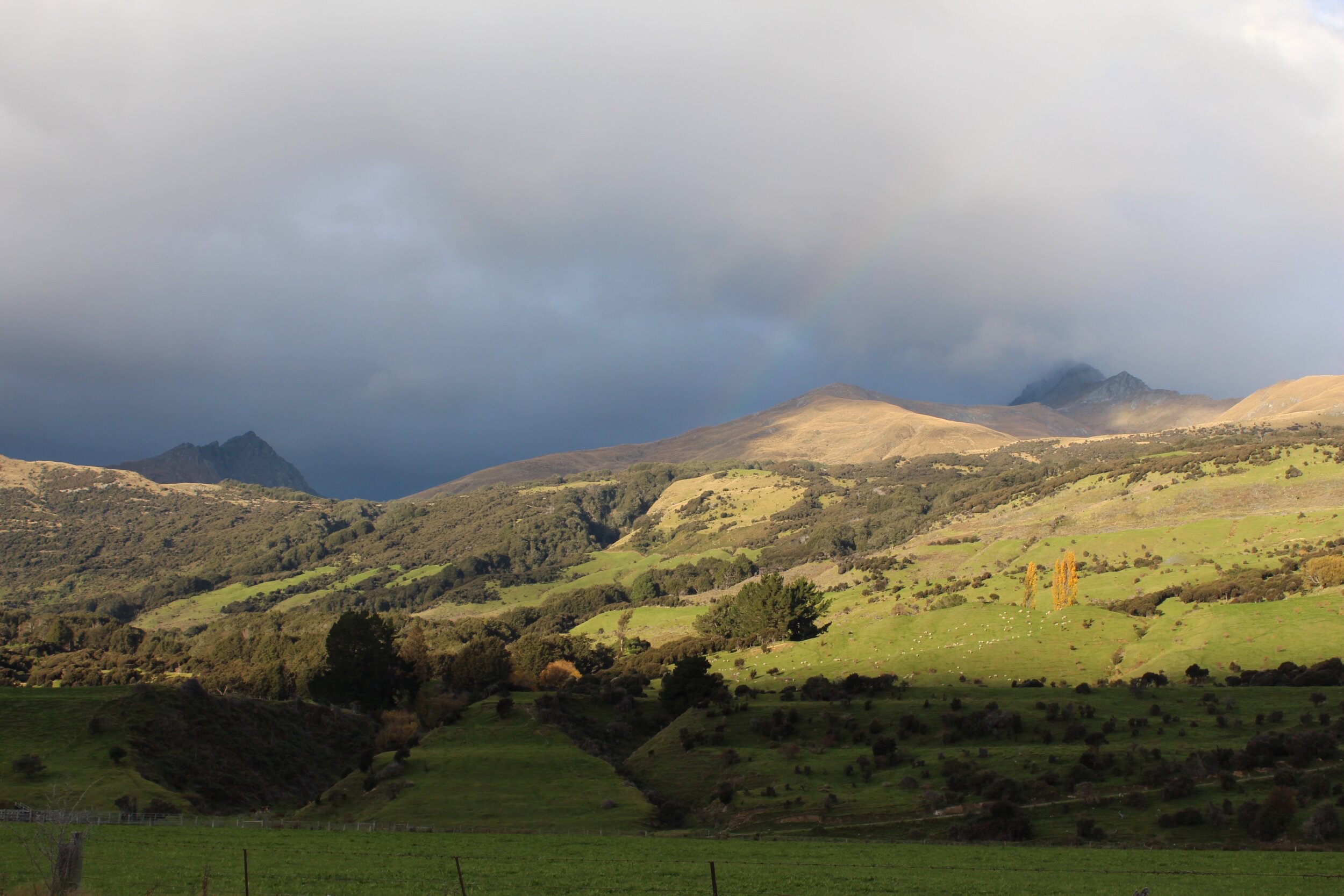
Colours
I painted this artwork using oil paint and the colours I used in this painting are as follows:
- Titanium white
- Burnt sienna
- Yellow oxide
- Cadmium yellow
- Cadmium orange
- Quinacridone crimson
- Ultramarine blue
- Cobalt teal
- Phthalo green
Brushes
Here is a list of the brushes I used in this painting:
- No.5 flat
- No.2 flat
- No.3 filbert
- No.1 round
- No.0 round
Painting Demonstration
I am painting on an 10” x 12” linen panel which I’ve toned with a thin wash of burnt sienna. This warms up the painting and helps with colour and tone.
I sketched out the composition with a No.1 round brush and burnt sienna. I am using oil paint and I have mixed the burnt sienna with Liquin Original which thins the paint and speeds up the drying time.
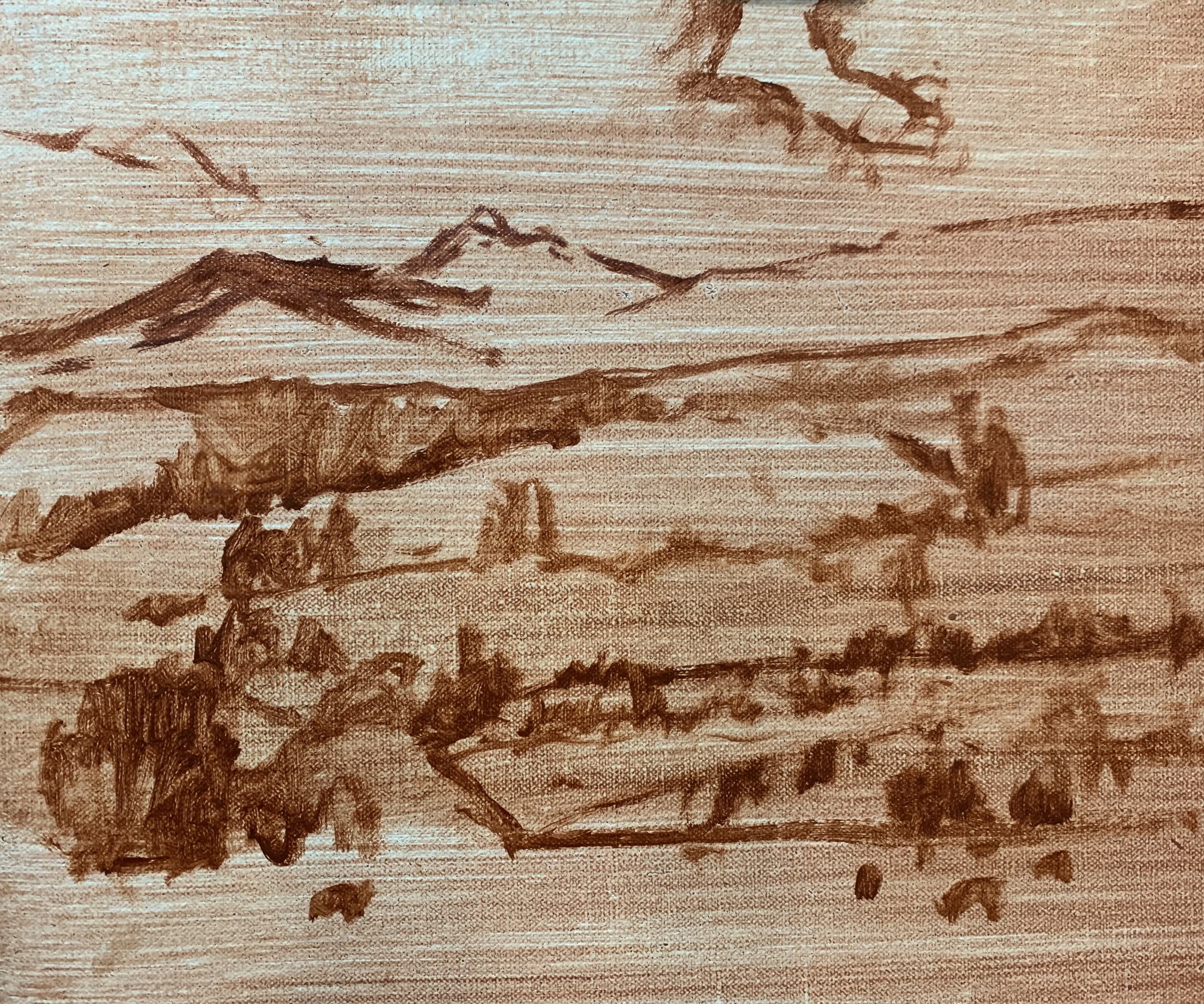
Whenever I start a painting I always first think about where my dark values are in the scene that I am painting. Value refers to how light or dark a subject is and we will find our darkest darks and our lightest lights in the foreground of a landscape. However as landforms recede into the distance darks become less dark and lights not as light as the value scale narrows. By understanding this concept we can create atmospheric depth in our paintings.
I start by establishing my dark values and shadows first beginning with the clouds and working my way forward with the mountain and tree shadows and then painting the trees in the foreground. The foreground trees are already in shadow and are the darkest values in the painting.
I mix the colours for the cloud shadows with ultramarine blue, burnt sienna and titanium white. I also mix in a small amount of quinacridone crimson to give the cloud shadows a violet tint. I use the same colour mix for the shadows in the mountains and mid ground trees with the same colours but less titanium white which makes the value darker.
For the foreground trees I mix a dark tone of ultramarine blue with a little yellow oxide.
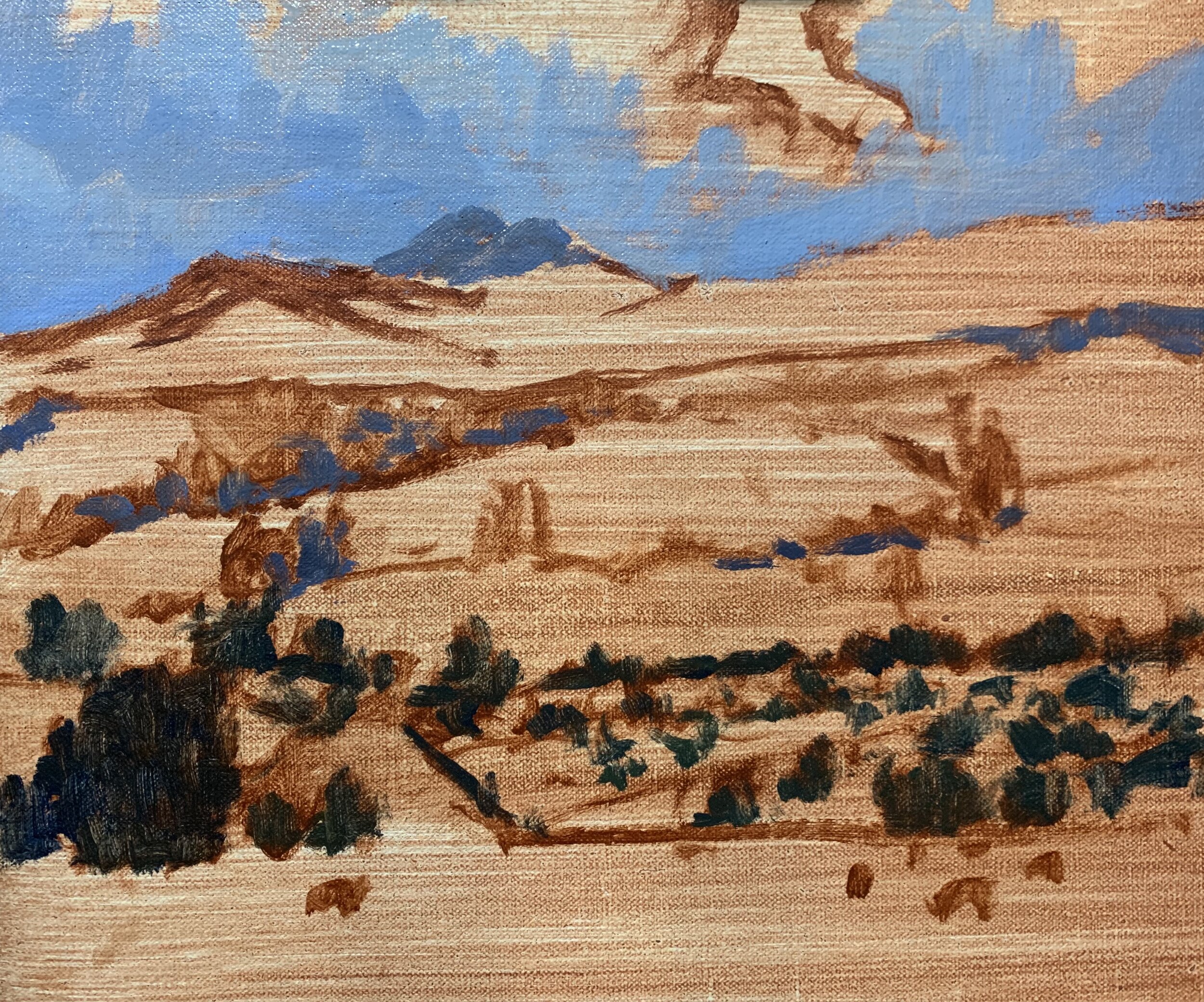
Now that I have established my main shadows and dark values I start adding colour, beginning with the furthest away zone in the painting which is the sky and clouds. I start adding cloud highlights with a mix of titanium white and a little burnt sienna. This also mixes in nicely with the cloud shadows.
There is tussock grass growing on the mountain, some of which is in shadow. I paint the shadows with a mix of ultramarine blue, yellow oxide, quinacridone crimson and titanium white. I use the same colours for the areas that are in full sunlight but using yellow oxide and titanium white as the dominant colours in the mix.
The trees in the upper section of the mountain are a mix of yellow oxide, ultramarine blue, burnt sienna and titanium white. Trees are some of the darkest values to be found in the landscape.
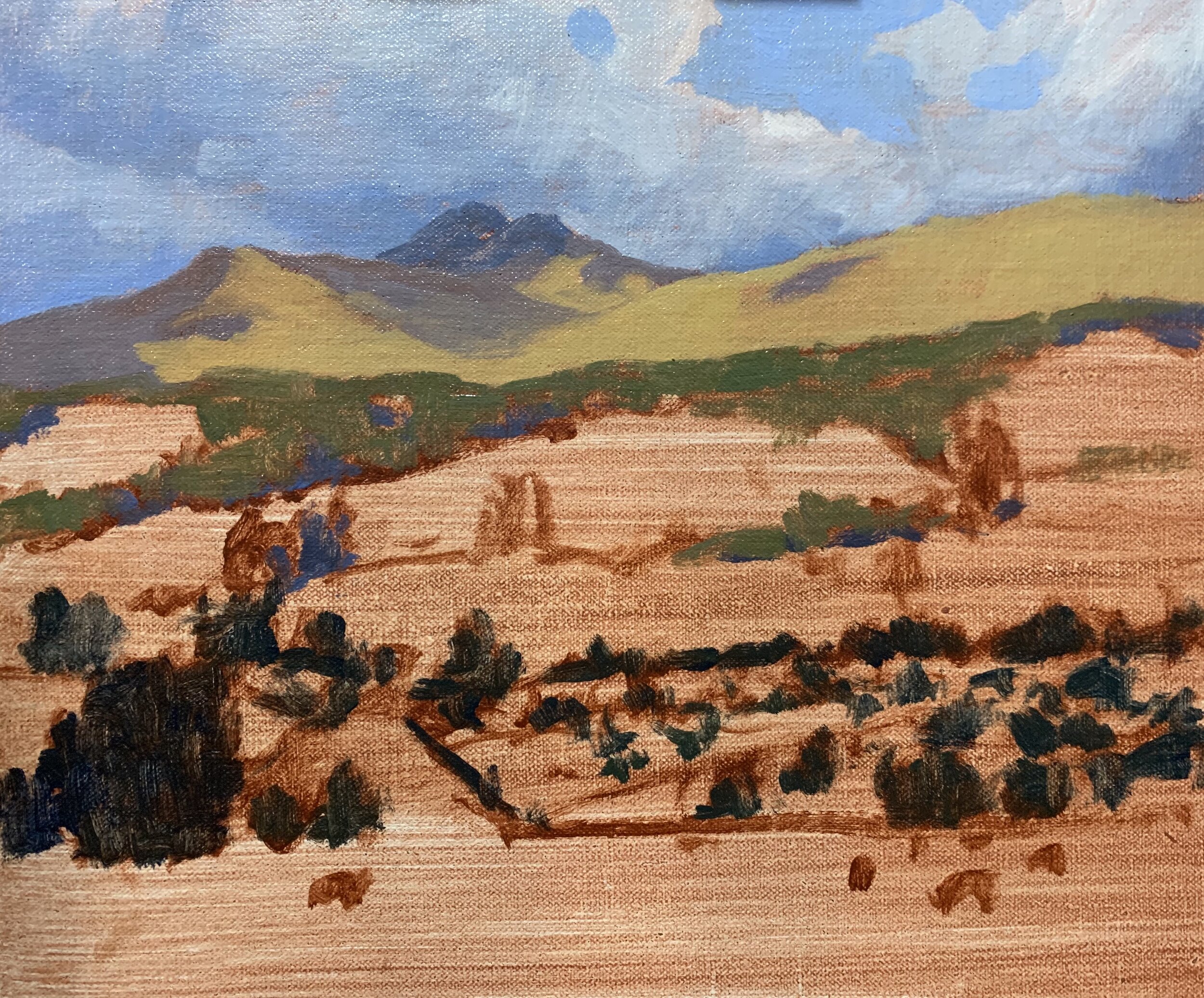
Next I start painting the fields in the upper and mid section of the hill. I need to make sure that my colours are not too saturated otherwise those greens will come forward in the painting. I therefore need to desaturate my greens a little.
For the green fields in the upper section of the hill I mix yellow oxide with cobalt teal, titanium white and a little quinacridone crimson. Yellow oxide is a lower chroma yellow and the quinacridone crimson is going to help balance out the green.
As I work my way down the hill I increase the saturation of the green by mixing yellow oxide, ultramarine blue, cadmium yellow and a little titanium white. Again I round off the colour with quinacridone crimson.
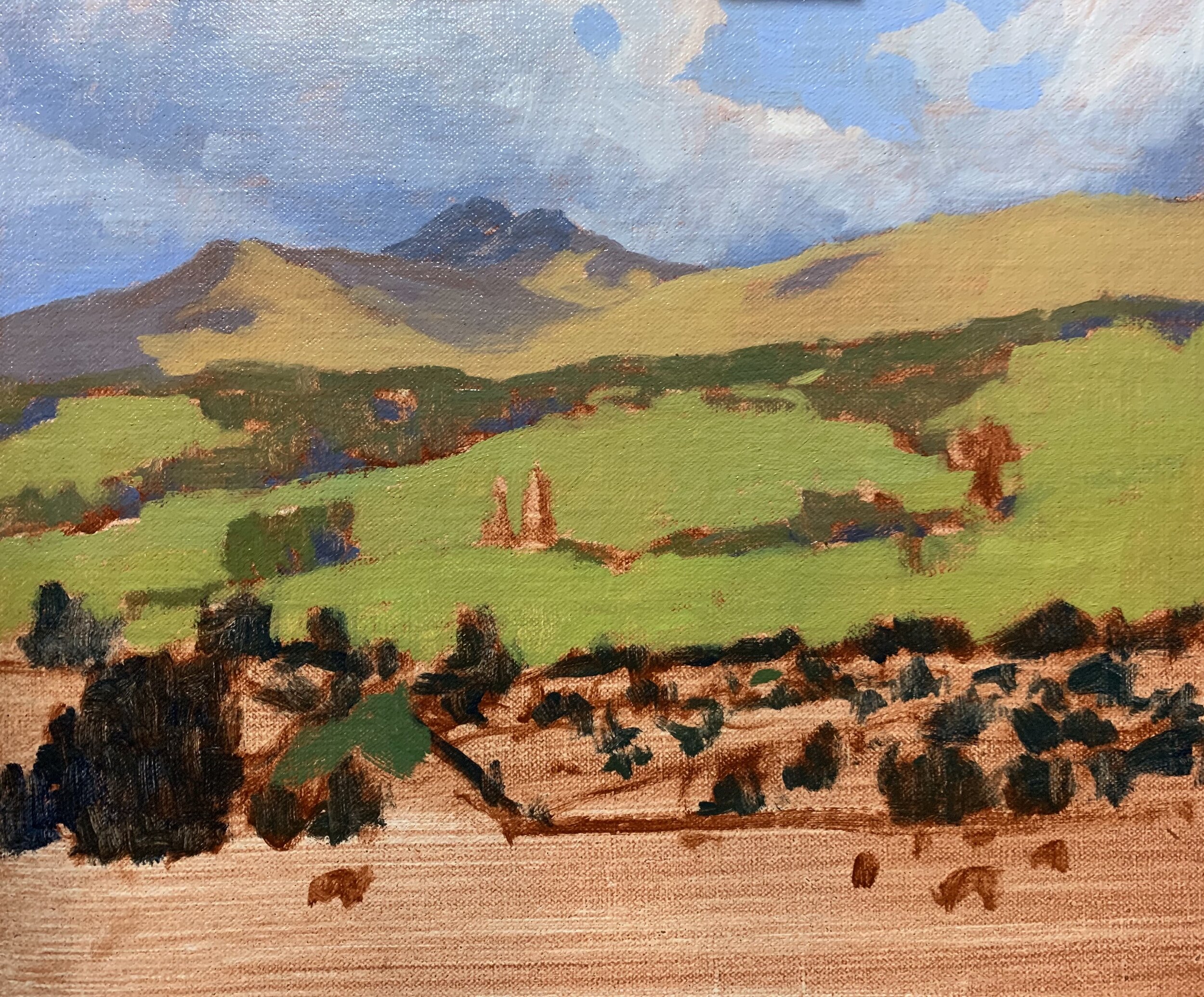
The foreground is in shadow so this is where we will find our darkest values in the painting. The trees are the darkest values so I need to make sure the grass is a much lighter value even though it is in shadow.
I mix the colours for the grass with a combination of yellow oxide, ultramarine blue, cobalt teal, titanium white and a little quinacridone crimson. I am creating a cool green here and the cobalt teal is going leave some emerald undertones within the colour.
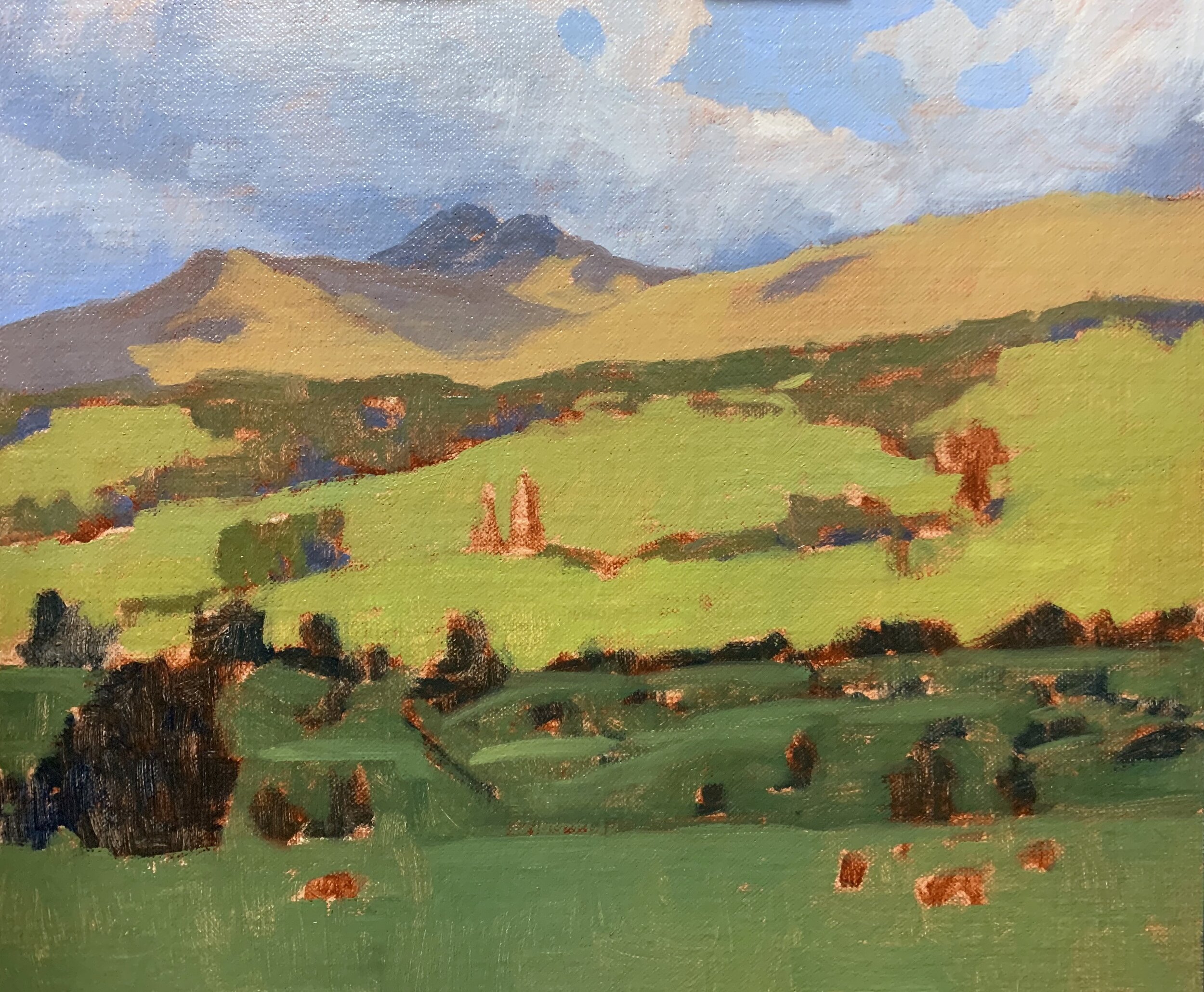
I finish the blocking in stage by tidying up all of the zones within the painting and restating the dark values.
I start painting the suggestion of a few sheep using a mix of ultramarine blue, burnt sienna and titanium white.
Whenever I block in a painting I always check that the colours and values are working in the scene before I move on to the next stage where I’ll be adding details. I let my painting dry fully and then began adding some details.

After I allowed my painting to dry I started adding details to the entire painting beginning with the sky. I am using the same colours I used during the block-in stage but now using smaller brushes for more detail.
I add much more details to the trees in the upper section of the hill and the Monterey cypress trees in the mid ground.
As I add more layers of paint to my initial block-in layer I am using lighter value colour which will help to build up a three dimensional form in the painting. I will be saving my lightest values until the end of the painting.

I let my painting dry so I could finish up the painting by adding some final details. I’ve added more details to the trees in the foreground as well as the grass and the sheep.
I left the sheep until last, using a No.0 synthetic round brush to paint some finer details, however I don’t want the sheep to look ridged or stuck on so I go a sparingly with the details. I want to maintain a fluidity and looseness to this scene.
I paint some reflected light in the tree foliage of the poplars in the foreground.

Thanks for reading 😊
